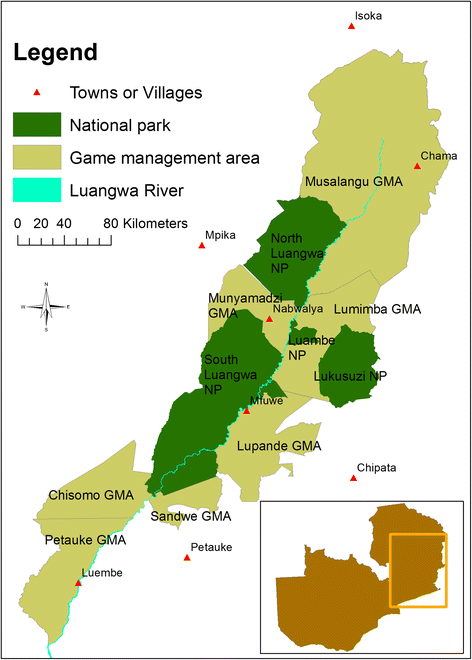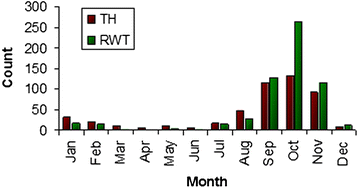Sleeping sickness and its relationship with development and biodiversity conservation in the Luangwa Valley, Zambia
- PMID: 25879414
- PMCID: PMC4403784
- DOI: 10.1186/s13071-015-0827-0
Sleeping sickness and its relationship with development and biodiversity conservation in the Luangwa Valley, Zambia
Abstract
The Luangwa Valley has a long historical association with Human African Trypanosomiasis (HAT) and is a recognised geographical focus of this disease. It is also internationally acclaimed for its high biodiversity and contains many valuable habitats. Local inhabitants of the valley have developed sustainable land use systems in co-existence with wildlife over centuries, based on non-livestock keeping practices largely due to the threat from African Animal Trypanosomiasis. Historical epidemics of human sleeping sickness have influenced how and where communities have settled and have had a profound impact on development in the Valley. Historical attempts to control trypanosomiasis have also had a negative impact on conservation of biodiversity.Centralised control over wildlife utilisation has marginalised local communities from managing the wildlife resource. To some extent this has been reversed by the implementation of community based natural resource management programmes in the latter half of the 20(th) century and the Luangwa Valley provides some of the earliest examples of such programmes. More recently, there has been significant uncontrolled migration of people into the mid-Luangwa Valley driven by pressure on resources in the eastern plateau region, encouragement from local chiefs and economic development in the tourist centre of Mfuwe. This has brought changing land-use patterns, most notably agricultural development through livestock keeping and cotton production. These changes threaten to alter the endemically stable patterns of HAT transmission and could have significant impacts on ecosystem health and ecosystem services.In this paper we review the history of HAT in the context of conservation and development and consider the impacts current changes may have on this complex social-ecological system. We conclude that improved understanding is required to identify specific circumstances where win-win trade-offs can be achieved between the conservation of biodiversity and the reduction of disease in the human population.
Figures




References
Publication types
MeSH terms
LinkOut - more resources
Full Text Sources
Other Literature Sources
Miscellaneous

